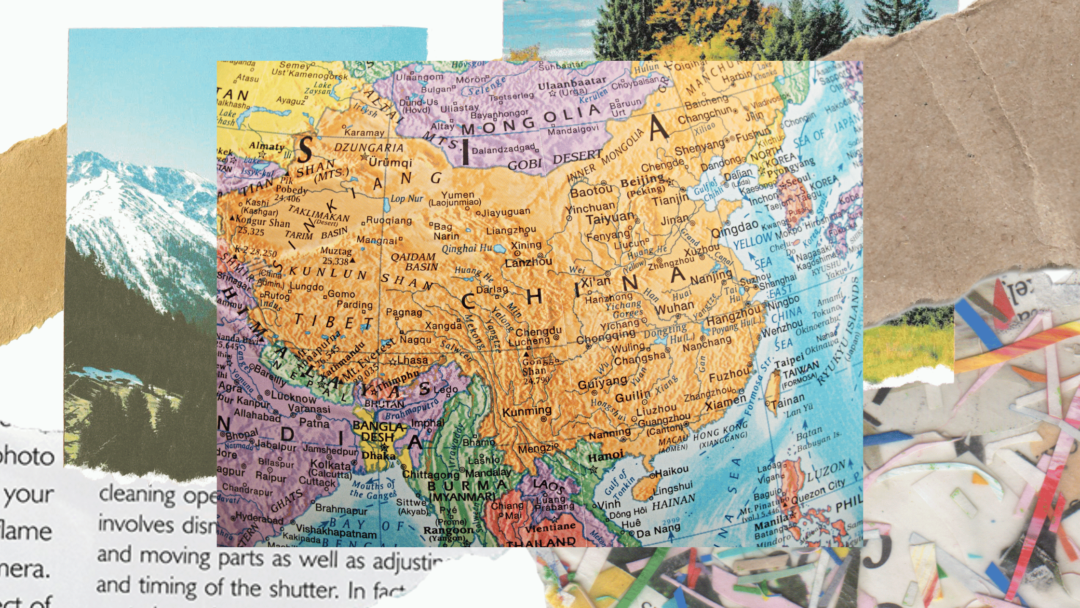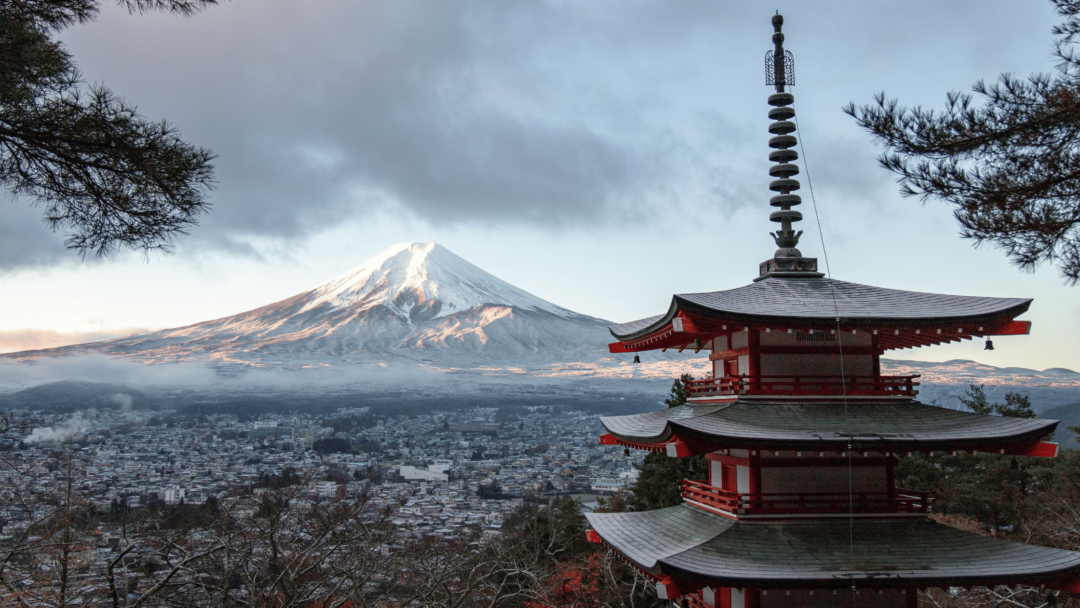Vietnam offers a wealth of engaging hobbies that beautifully reflect its rich cultural heritage and fascinating history.
Engaging in activities such as traditional Vietnamese cooking classes, exploring the world-renowned caves in Phong Nha, and participating in Vespa tours through cities like Ho Chi Minh and Hanoi can provide a deep dive into the local way of life. These hobbies not only entertain but also educate, offering unique insights into Vietnamese traditions and ways of life.
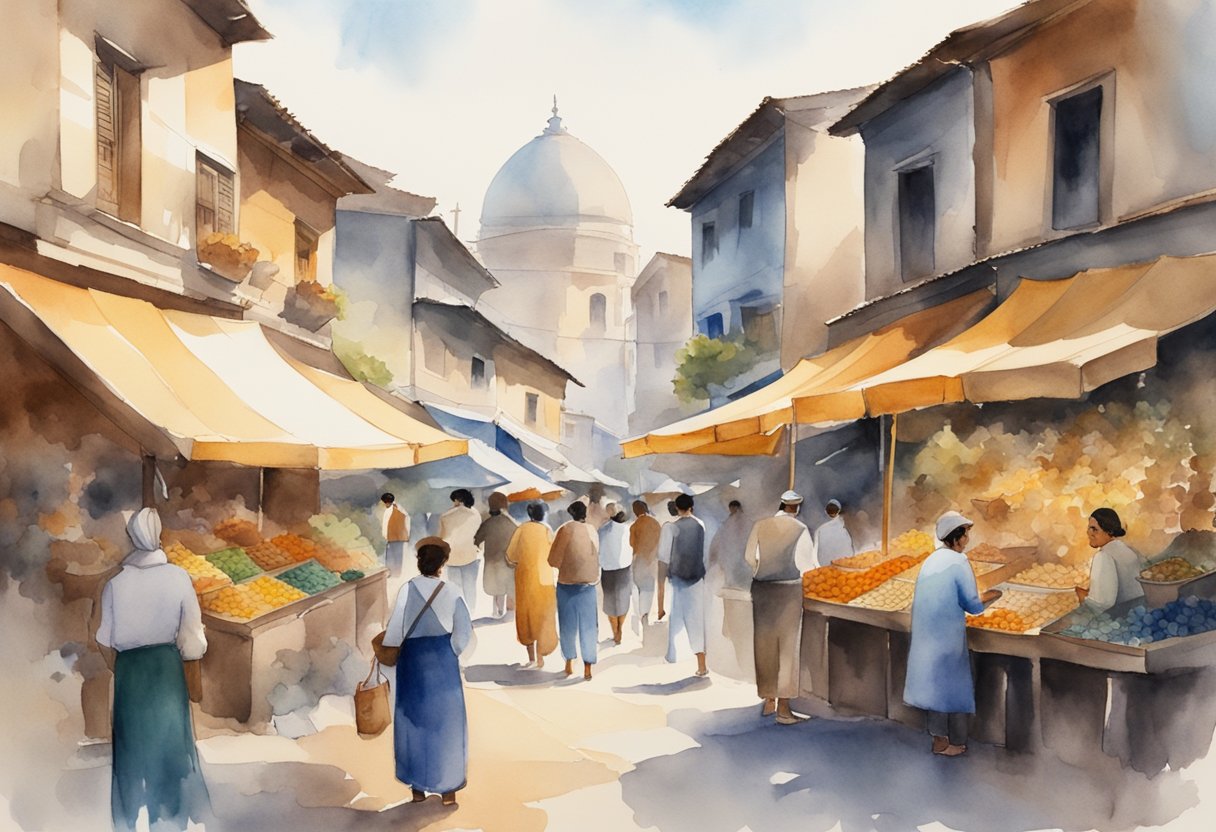
You can immerse yourself in the vibrant local culture by visiting historical sites like the Cu Chi Tunnels, or the ancient town of Hoi An, which is famed for its well-preserved architecture and amazing street food.
Activities such as trekking in Sapa or cruising the picturesque Mekong Delta add an adventurous twist to your cultural exploration, allowing you to witness the diverse landscapes and lifestyles that make Vietnam unique.
For a more creative and hands-on experience, try tailoring your own clothes in Hoi An or partaking in a coconut boat tour. These activities are not just hobbies but gateways to understanding the rich tapestry of Vietnam’s history and traditions, ensuring your journey is both enjoyable and enlightening.
Historical Context

Vietnam’s history is rich and multifaceted, shaped by ancient dynasties, colonial influences, and a profound sense of cultural heritage. This section explores key historical epochs that have left a lasting impact on modern Vietnam.
Vietnam’s Rich History
Vietnam’s history spans thousands of years, beginning with the founding of the first Vietnamese state, Văn Lang, around 2879 BC.
You can explore this early history through numerous archaeological sites scattered throughout the country.
Among these are the ancient bronze drum artifacts from the Đông Sơn culture, which illustrate the advanced metallurgical skills of early Vietnamese civilizations.
Historical sites like the Imperial City in Hue offer insights into the grandeur of the past, showcasing intricate architecture and the remnants of imperial palaces that once dominated.
Influence of Dynasties
Vietnam has experienced numerous dynastic rulers, each leaving an indelible mark on its culture and governance.
The Nguyen Dynasty, from the early 19th century until 1945, was the last ruling family and played a significant role in shaping the nation’s cultural and political landscape.
The Nguyen Dynasty established Hue as the capital, constructing imperial palaces and monuments that stand as historical treasures today.
The Imperial City in Hue, a UNESCO World Heritage Site, reflects the architectural brilliance and political importance of this era, making it an essential destination for history enthusiasts.
Colonial Past and Its Impact
Vietnam’s colonial history began in the mid-19th century when it became part of French Indochina. The colonial era brought profound changes, including the introduction of Western education, infrastructure development, and economic exploitation.
The French influence is evident in Vietnam’s architecture, particularly in cities like Hanoi and Ho Chi Minh City, where French colonial buildings still stand.
The impact of this period is still felt, contributing to Vietnam’s complex modern identity. Understanding the colonial past is crucial for appreciating the resilient spirit and cultural fusion that characterizes contemporary Vietnam.
Cultural Fabric of Vietnam
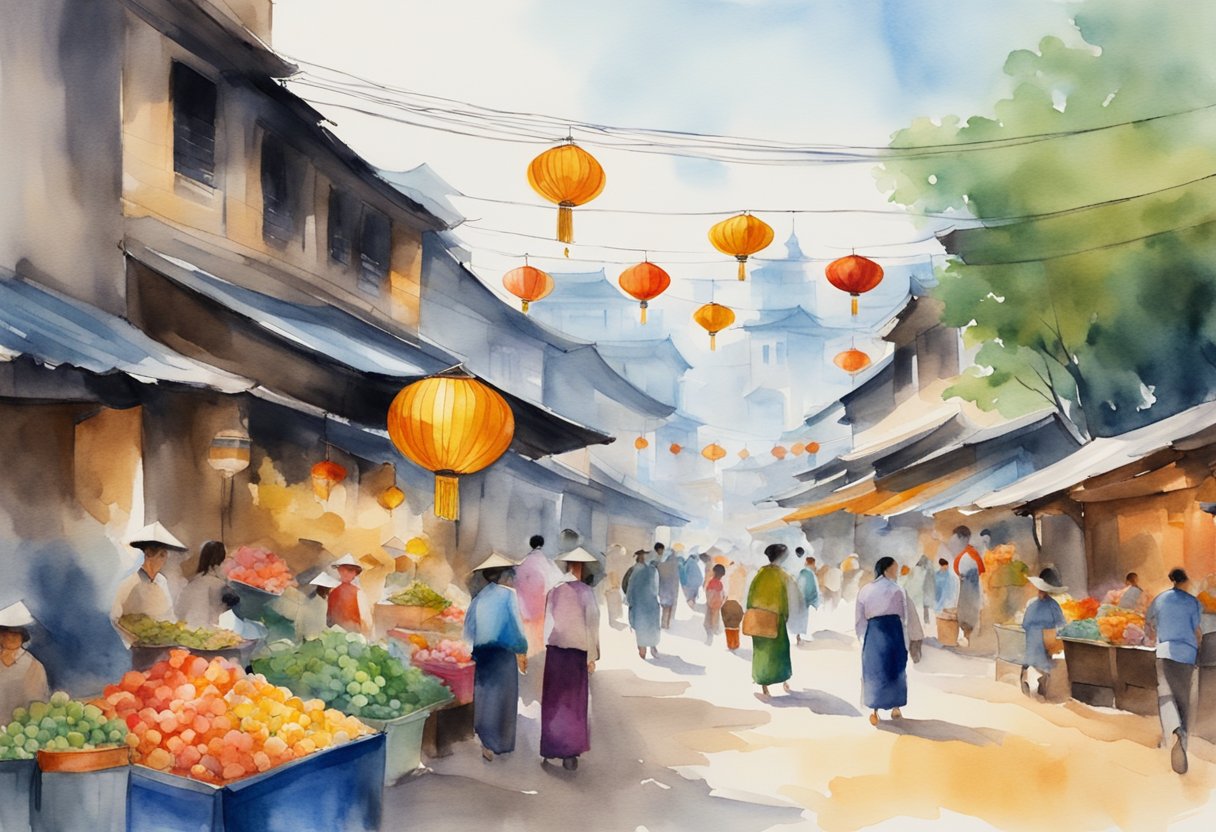
Vietnam’s culture is a vibrant tapestry woven from its traditions, rituals, and artistic expressions. Major cultural elements such as traditional festivals, rituals, and Vietnamese arts and literature offer a deep insight into the nation’s rich history and identity.
Traditional Festivals and Celebrations
Vietnam hosts numerous festivals throughout the year, each showcasing its cultural richness.
The Lunar New Year (Tet) is the most significant celebration, marking the arrival of spring. Families come together to honor their ancestors, clean their homes, and prepare special foods. Streets are adorned with lion dances and colorful decorations.
Another notable festival is the Mid-Autumn Festival, characterized by lantern processions and mooncakes. Children participate in these festivities, enjoying the folklore stories and traditional games.
These festivals are not only communal but also highlight the deep-rooted cultural practices and traditions of Vietnam.
Rituals and Ancestral Worship
Respect for ancestors is a cornerstone of Vietnamese culture.
Ancestral worship rituals are performed regularly, involving offerings of food, incense, and symbolic money to honor deceased family members. This practice is deeply intertwined with Confucian and Buddhist principles, emphasizing family values and respect for elders.
Homes typically have an ancestral altar where these rituals take place. During major festivals like Tet, these practices become more elaborate, with families visiting ancestral graves to clean them and make offerings.
This tradition reflects a profound connection between the past and present in Vietnamese society.
Vietnamese Literature and Arts
Vietnamese literature and arts are a reflection of its historical and cultural legacy.
Traditional water puppet shows are a unique form of storytelling, originating from ancient rural communities. These performances depict folklore and historical events, often accompanied by traditional music.
You will also find the traditional dress ao dai, which represents the elegance and grace of Vietnamese culture.
Moreover, Vietnam is known for its craft villages specializing in ceramics and lacquerware. These art forms not only preserve traditional craftsmanship but also convey cultural narratives through intricate designs and motifs.
The Culinary Journey
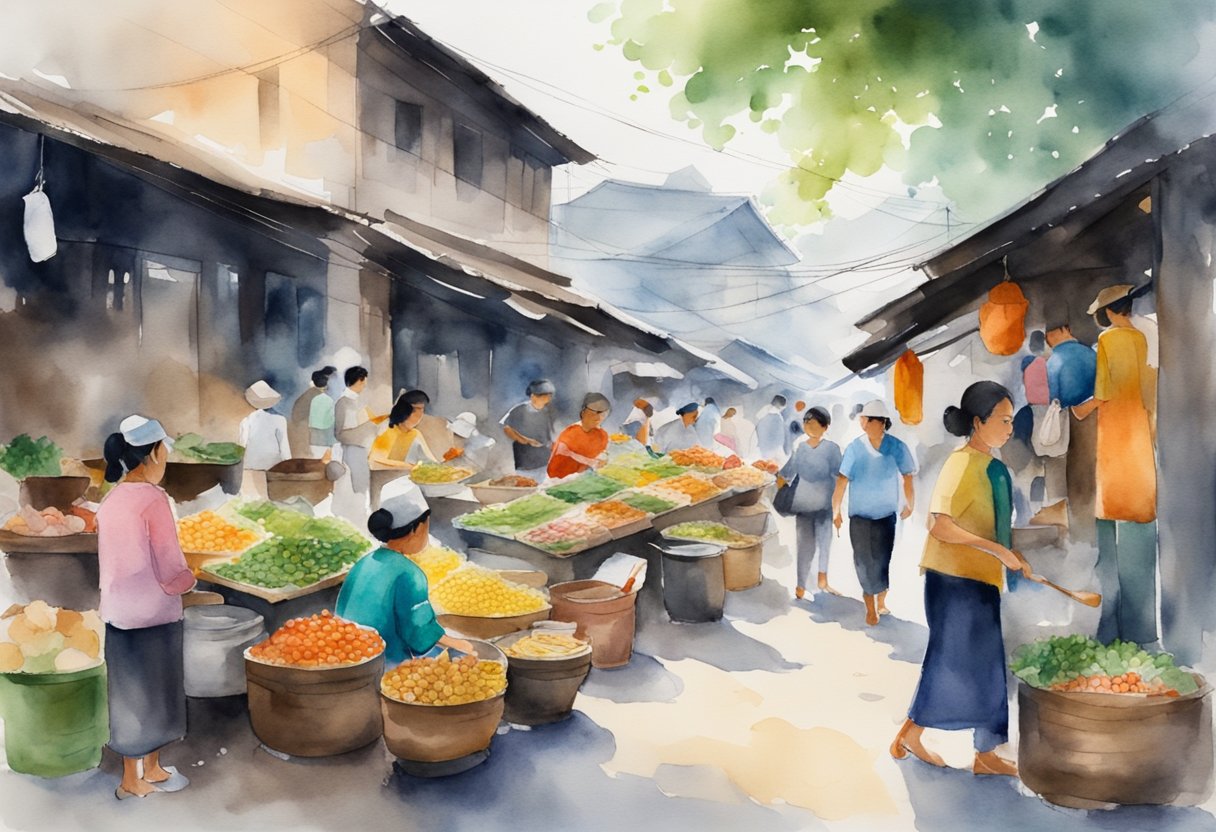
Vietnam offers a rich and diverse culinary landscape, where traditional dishes, bustling street food scenes, and regional specialties converge to provide a unique gastronomic experience. From the iconic pho to the flavorful banh mi sandwiches, there’s much to explore in Vietnam’s food culture.
Signature Dishes
Vietnamese cuisine is celebrated for its pho, a fragrant noodle soup made with slow-cooked beef or chicken broth, rice noodles, fresh herbs, and bean sprouts. Pho is a staple for breakfast and can be found everywhere from local markets to high-end restaurants.
Another must-try dish is the banh mi sandwich. It combines a French baguette with a variety of fillings such as grilled pork, pate, pickled vegetables, and fresh herbs, reflecting Vietnam’s colonial history.
In addition to these, you should explore spring rolls (goi cuon). These fresh rolls contain shrimp, pork, and plenty of vegetables, wrapped in rice paper and often served with a dipping sauce.
Street Food Culture
Vietnamese street food culture is vibrant and offers an array of flavors and textures.
In Ho Chi Minh City, you can savor the best banh mi sandwiches and goi cuon. Stalls and vendors line the streets, providing quick and affordable options.
Communal dining is common, with people gathering around small plastic tables to enjoy dishes together. You might find items like sizzling pancakes (banh xeo), hearty pho, and sweet, coconut-flavored desserts.
Visiting local markets is essential to experience this culture. These markets are bustling with vendors selling live seafood, fresh produce, and ready-to-eat snacks. They offer you a firsthand look at the ingredients and techniques that make Vietnamese food special.
Fusion and Regional Varieties
Vietnamese cuisine varies greatly by region, each offering distinct flavors and traditions.
In the north, dishes are more robust and savory. For example, Hanoi’s pho is known for its clear, hearty broth.
Central Vietnam is famous for its spicy foods and beautiful presentations, often using fresh, local ingredients like rice and vegetables. The region’s bun bo Hue, a spicy beef noodle soup, is a highlight.
In the south, the cuisine tends to be sweeter and more liberal with herbs. Coconut milk and lemongrass are commonly used ingredients in southern dishes.
Ho Chi Minh City is a hotspot for modern culinary fusions, where traditional Vietnamese flavors meet global influences.
You can also enhance your culinary journey by attending cooking classes. These classes will teach you the art of Vietnamese cooking, allowing you to bring a piece of Vietnam back to your kitchen.
Check out our Huge List of Food Hobbies for more awesome food and cooking-related hobby ideas!
Architecture and World Heritage Sites

Vietnam’s architecture reflects its rich history and cultural diversity. You’ll find impressive historical structures and several UNESCO World Heritage Sites, each offering a unique window into the country’s past. This section focuses on the highlights of Vietnam’s architectural heritage.
Historic Architecture
In Vietnam, historic architecture is a testament to its complex history.
Hue, the ancient imperial capital, is famed for its Imperial City and royal tombs. These structures provide a glimpse into the regal past.
Hanoi’s Old Quarter is another must-visit. This area is a blend of traditional Vietnamese and colonial French architecture. You’ll see narrow streets lined with tube houses that date back centuries.
Don’t miss Hoi An, an ancient town that features a mix of wooden Chinese shophouses, French colonial buildings, and ornate temples. These structures make Hoi An a living museum of architecture.
UNESCO World Heritage Sites
Vietnam boasts eight UNESCO World Heritage Sites.
Halong Bay is a natural wonder with limestone karsts and emerald waters, making it one of the most popular destinations.
The Imperial Citadel of Thang Long in Hanoi is notable for its historical and cultural significance. This area was the political center for over a thousand years.
The My Son Sanctuary is a complex of Hindu temples built by the Champa civilization. This site offers an intriguing look into the religious and cultural history of Vietnam.
Preservation of Ancient Structures
Preservation efforts are essential for maintaining Vietnam’s ancient structures.
In Hue, you’ll find ongoing work to preserve the Imperial Palace and its surrounding complexes.
In Hoi An, strict regulations ensure that new constructions align with the town’s historical aesthetic, preserving its unique charm. Government and local communities collaborate to maintain the town’s architectural integrity.
The Perfume River in Hue also plays a role in the preservation efforts. The river is crucial for the area’s ecosystem and supports various historically significant structures along its banks. Conservation initiatives help to protect both the natural and man-made heritage of the region.
The Natural and Urban Landscapes
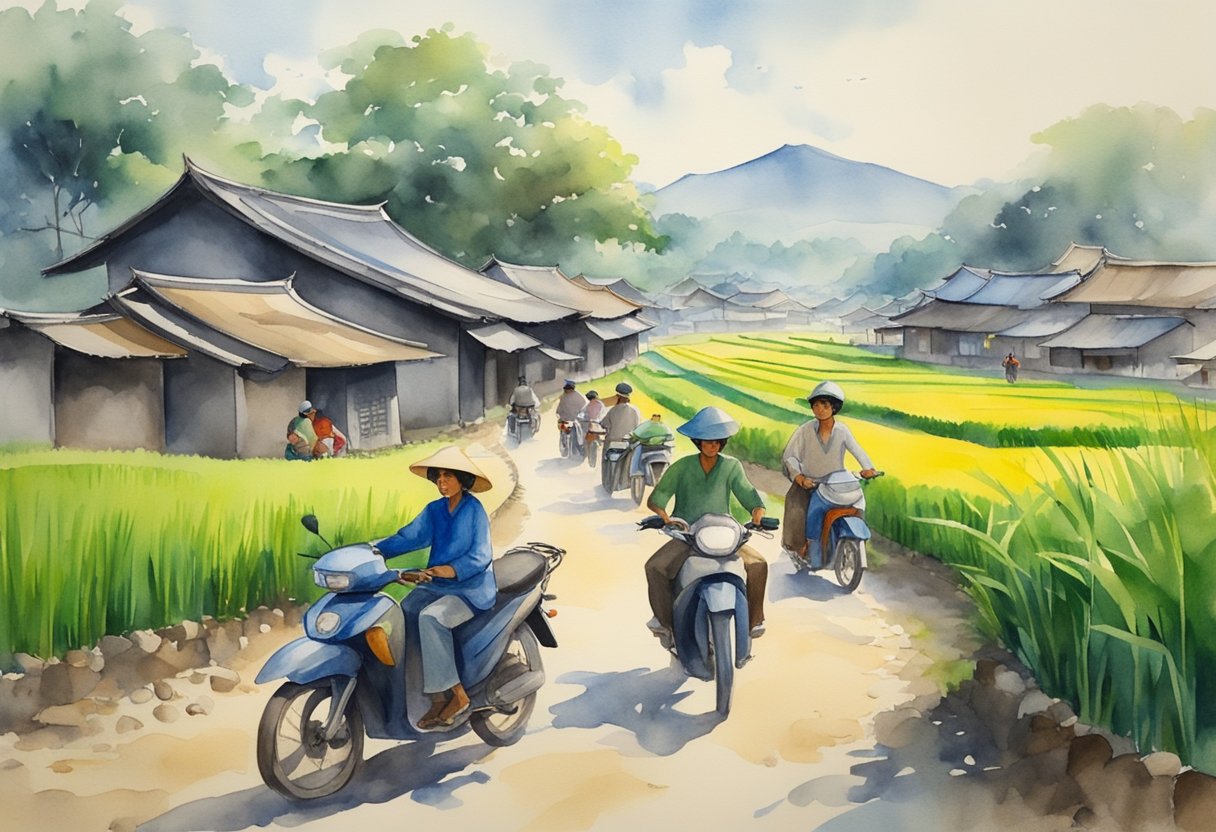
Vietnam offers a rich tapestry of nature and urban environments where you can experience stunning scenic beauty and vibrant city life. From the iconic Ha Long Bay to bustling Ho Chi Minh City, you will find an exciting blend of the traditional and modern.
Scenic Nature Spots
Embark on a journey through Vietnam’s breathtaking natural landscapes.
Ha Long Bay is renowned for its emerald waters and towering limestone formations, providing a unique blend of serenity and majesty.
For a more mountainous experience, Sapa in the northwest features spectacular rice terraces and is a window into the life of local ethnic minorities.
Phu Quoc, an island in the south, offers pristine beaches and lush jungles. Known as a coastal paradise, it promises tranquility and natural beauty.
The Ban Gioc Waterfall, located on the border with China, is another must-see, offering a powerful display of nature’s prowess. Each of these spots represents a facet of Vietnam’s diverse landscape.
Modern Cities and Their Charm
Vietnamese cities like Ho Chi Minh City, Hanoi, and Da Nang burst with energy and vibrancy.
Ho Chi Minh City, the economic hub, is a mix of modern skyscrapers and historic French colonial buildings. The bustling markets and vibrant nightlife capture the essence of urban life.
Hanoi, the capital, is famous for its old quarter and lakes. Traditional Vietnamese architecture and chaotic street scenes combine to make it an enchanting urban experience.
Da Nang, known for its coastal charm, offers beautiful beaches, modern resorts, and a growing culinary scene. Each city reflects a different aspect of urban Vietnam, harmonizing history and modernity.
Recreation and Leisure Activities

Vietnam offers a wealth of recreational and leisure activities. Visitors and locals alike can engage in various outdoor adventures and cultural experiences that enrich their understanding of the country’s history and traditions.
Popular Outdoor Activities
Vietnam’s diverse landscapes provide numerous opportunities for outdoor activities.
You can go trekking in Ninh Binh to explore its natural beauty and limestone karst formations.
For those who enjoy the seaside, relaxing on the beautiful beaches of Phu Quoc offers a perfect retreat.
Biking is another popular activity. Many tourists rent bikes to explore local markets and rural areas, allowing them to experience daily Vietnamese life up close.
If you’re looking for a unique adventure, a coconut boat tour is highly recommended. It’s a memorable way to navigate small canals and interact with local communities.
Cultural and Educational Experiences
Vietnam’s rich culture can be explored through various educational activities.
Join a cooking class in Hoi An to learn traditional Vietnamese recipes. This hands-on experience provides insight into local ingredients and culinary techniques.
Visiting the Marble Mountains in Da Nang combines natural beauty with historical significance. These mountains are home to numerous caves, temples, and pagodas.
Attending a traditional water puppet show is another must-do, offering a glimpse into Vietnam’s performing arts.
Homestays with local ethnic groups offer a deeper understanding of Vietnam’s diverse cultural tapestry. Engaging directly with these communities allows for an immersive and authentic cultural experience.
Contemporary Culture and International Influence

In modern Vietnam, traditional values blend with international trends, creating a unique and evolving cultural landscape. Influences from Western culture, globalization, and urban development shape the contemporary lifestyle in cities like Saigon and Hanoi.
Modern Vietnamese Lifestyle
In bustling cities such as Saigon, you’ll find a dynamic mix of old and new.
Motorbikes and scooters dominate the streets, reflecting both practicality and the fast-paced urban life.
Vietnamese youths embrace Western fashion, technology, and social media, all while maintaining a deep connection to their cultural roots.
Community life remains integral, where local markets and street food vendors thrive alongside modern cafes and shopping malls.
This juxtaposition offers a rich, multifaceted life that embodies both tradition and contemporary elements. Whether exploring traditional hoa markets or modern malls, you can see this blend almost everywhere.
Globalization and Cultural Exchange
Globalization has brought significant international influence into Vietnamese culture.
English is widely spoken, especially among the younger generation, and educational exchanges with Western countries are common.
This has led to a greater openness and understanding between Vietnam and the rest of the world.
Cultural exchange programs and international events in urban centers bring people from diverse backgrounds together. This blend fosters an environment where you can experience both Vietnamese tradition and global modernity in daily life.
In areas populated with expats, such as Tay District in Hanoi, the influence is even more pronounced. Here, Western-style restaurants and entertainment venues co-exist with traditional Vietnamese establishments, making it a hotspot for cultural interaction.
Frequently Asked Questions
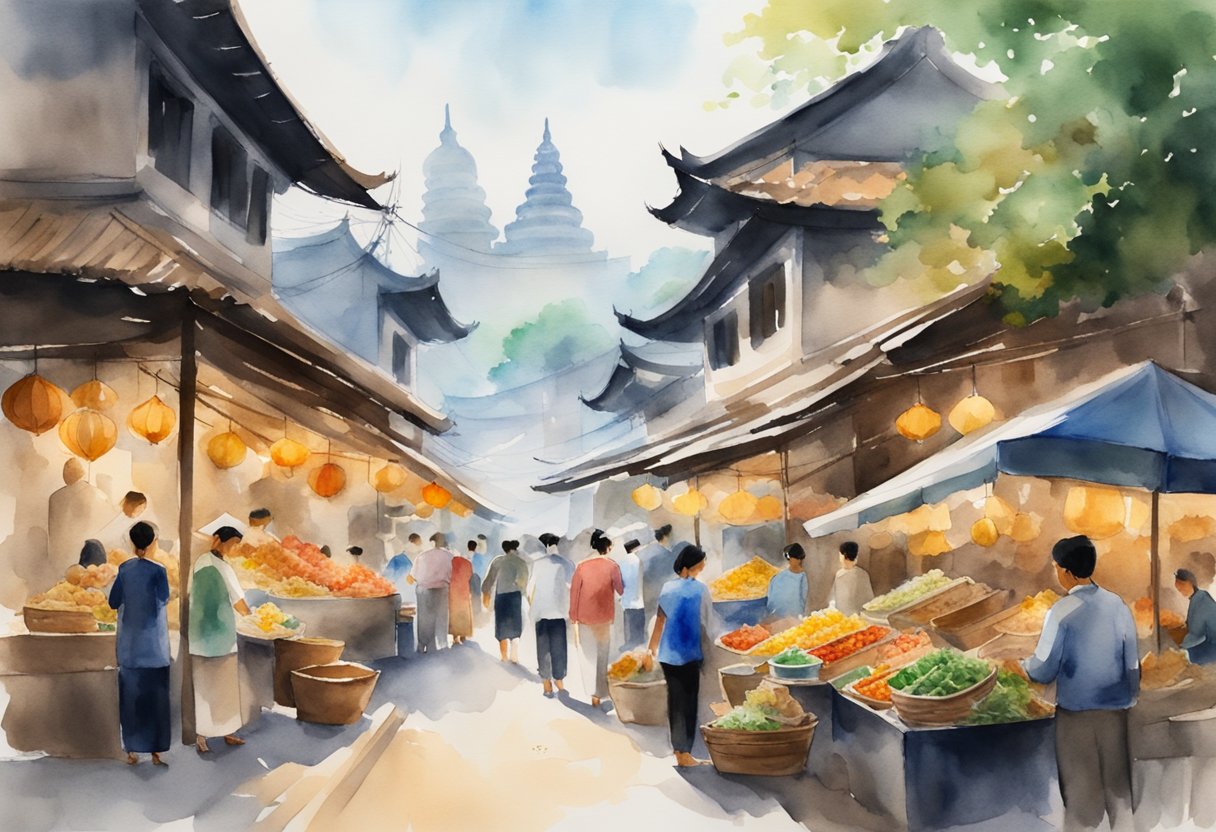
Discover the traditional hobbies, local customs, generational pastimes, cultural events, and unique entertainment practices that enrich Vietnamese culture and shape leisure activities in the country.
What are the traditional hobbies that reflect Vietnamese culture?
Traditional Vietnamese hobbies include calligraphy, tea drinking, and folk games like bamboo jacks and tug-of-war. These activities not only offer enjoyment but also serve as a means to preserve cultural heritage.
How do local customs influence popular activities in Vietnam?
Local customs deeply influence popular activities by emphasizing community participation and respect for nature. Activities such as lotus flower harvesting, traditional fishing methods, and communal cooking in village festivals are common.
Which pastimes are commonly enjoyed by different generations in Vietnam?
Older generations often enjoy traditional music and Tai Chi. Younger people may participate in karaoke, football, and gaming. Both young and old gather for family meals, an important social activity.
What cultural events and festivals are most significant in Vietnam?
Key cultural events include Tet, the Lunar New Year, marked by family gatherings and traditional foods. The Mid-Autumn Festival features lion dances and mooncakes, while the Hue Festival showcases art, music, and cuisine.
How do Vietnamese values shape leisure activities in the country?
Vietnamese values such as respect for elders and strong familial bonds shape leisure activities that often involve the family unit. Activities like family outings to historical sites and ancestor worship practices are common.
What are some unique entertainment practices in Vietnam?
Unique entertainment practices include water puppetry, a traditional art form depicting folklore scenes.
Martial arts like Vovinam are also popular, combining physical fitness with cultural heritage.



